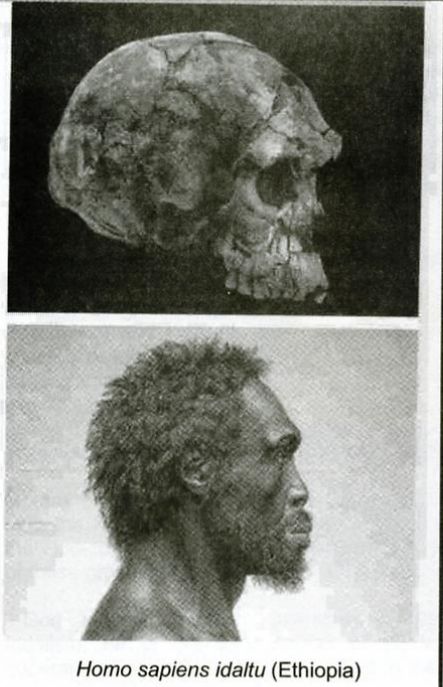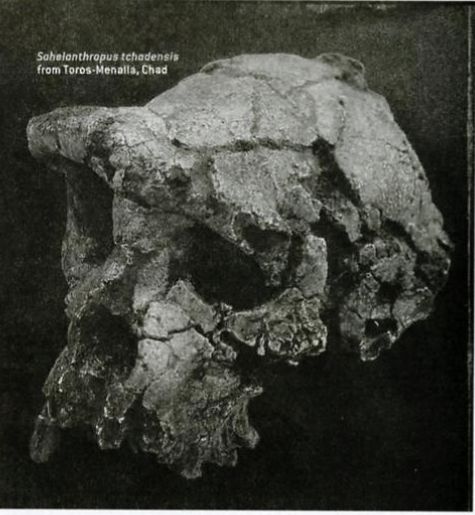© 2003 Ken Glasziou
© 2003 The Brotherhood of Man Library
There can be little doubt that the origins of mankind were in Africa for there is to be found there, a group of hominid fossils belonging to the genus Australopithecus, any one of which may have been a forebear of the genus Homo–the one to which we belong, and which is also represented in Africa
The Urantia Book informs us that man arose about 1 million years ago, while denying that it had a direct African ancestry.
Paleoanthropology has two main schemes for human ancestry, one being the ‘out of Africa alone’ hypothesis, the other being ‘multiregional’–meaning that the ancient ancestors of various human groups lived where they are found today. Included is the possibility that the so-called Neanderthal man, a specialized form of man well adapted to the climate of an ice-age, could interbreed with modern man. An extreme view is that the Neanderthal was the progenitor of modern man.


Both main theories have their deficiencies. For the ‘out of Africa’ theory there was a big hole in the African fossil record extending from between 300,000 and 100,000 years ago–in which period the transition to morphological modernity was expected to have occurred.
New light was thrown upon the origins of man with the publication in June of a paper in Nature by T.D. White et al. that describes three skulls, reliably dated at nearly 160,000 years old, and said to be the earliest near-modern humans on record.
Found at a site called Herto in Ethiopia, these fossils exhibit such modern traits as a globular brain case, but also retain ancient features, a prominent brow ridge, for example. Given the sub-species name Homo sapiens idaltu, this species forms a link between earlier African archaic forms and later fully modern ones–and so provides strong supporting evidence that Africa was the birthplace of our kind.
These Herto hominids are also indicative of whether the Neanderthals were the forebears of modern man. Whereas the ‘out of Africa’ theorists contend that such archaic hominids did not contribute significantly to the modern human gene pool, many multiregionalists have argued that the Neanderthals interbred with or merged with modern humans.
The Neanderthals were around from about 200,000 years ago until around 30,000 years ago when they disappeared. The fact that these near-modern Herto humans were already present in Ethiopia while the Neanderthals were still developing their distinctive characteristics in Europe is indicative that, at most, only trivial amounts of Neanderthal genetic material would have ‘leaked’ to the modern human.
Further evidence that the Neanderthals contributed little to the gene pool of modern humans comes from mitochondrial DNA (mtDNA)studies from two early modern European fossils that were shown to be markedly different from the mtDNA sequences recovered from four Neanderthal specimens.
[Plant and animal cells contain large numbers of mitochondria, the ‘factories’ that break down sugars and provide the cell with energy. Each has its own piece of DNA that is independent of nuclear DNA. Offspring inherit their mitochondria from their mother only, and are copies of themselves. Variation comes from mutation only.]